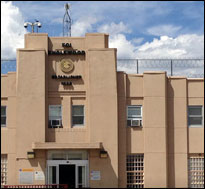
From the Scholars Strategy Network, written by Joe Soss, University of Minnesota.
Over the past four decades, criminal justice in the United States has taken a sharp disciplinary turn. Muscular new policies and stronger efforts to root out and punish violations have pulled an ever-larger number of citizens into an expanding apparatus of state surveillance, custody, and control. As a growing body of research documents, the results have been far-reaching transformations of American society unlikely to fade any time soon.
The rise of mass incarceration after the 1960s is commonly explained by scholars as a political response to new social and economic insecurities, with intense party competition spurring the turn toward draconian punishments. But when scholars turn from dissecting the causes of the prison boom to exploring its consequences, politics tends to fade from view. Today, we know a lot about how the expanded operations of the criminal justice system have negative social and economic effects for disadvantaged communities. Only recently, however, have researchers begun to explore how expanded systems of policing and correctional control are reshaping civic life and democracy in the United States. Contributors to the January 2014 special issue of the Annals of the American Academy of Political and Social Scienceon “Detaining Democracy? Criminal Justice and American Civic Life” present some of the most important new research results – showing that the era of expansive policing, custody, and confinement has been politically harmful for poor and black Americans, undermining their prospects for constructive citizenship and undermining faith in U.S. public institutions.
The community impact of draconian criminal justice
Important findings from recent research present a staggering picture of the ways in which the prison boom and ongoing surveillance have changed the political ecology of particular neighborhoods, communities, and states.
A careful analysis by Northwestern University political scientist Traci Burch reveals the degree to which “the criminal justice system affects black and poor neighborhoods detrimentally.” There are neighborhoods in North Carolina, she finds, where the density of adults under correctional supervision reaches a stunning 590 residents per square mile. Furthermore, as University of California, Berkeley, and Yale political scientists Amy Lerman and Vesla Weaver have discovered, the same neighborhoods that have many imprisoned adults are also typically targeted for the most aggressive forms of policing. In one area of Brooklyn, New York, for example, police stopped residents at a rate of more than 500 per 1,000.
The negative effects for local communities entangled in the criminal justice system are not limited to individuals who have personal experiences with arrests, imprisonment, or probation.
- Burch’s research documents that policies of mass custody and control weaken social ties and stoke alienation and political disengagement among many community residents, deepening the political marginalization of already disadvantaged neighborhoods.
- Lerman and Weaver ask whether routine encounters with adversarial policing make residents less willing to call for help from municipal officials when they encounter problems in their neighborhoods. Their analysis underscores how daily police encounters undermine trust in government and weaken citizen voice and cooperation with authorities.
Electoral rules and participation in the states
The fifty U.S. states play a crucial role in setting rules for elections and voter eligibility, and University of Pennsylvania political scientist Marc Meredith and Stanford Law School research fellow Michael Morse look at the impact of state policies to bar or encourage voting by ex-felons. Many U.S. states have put laws on the books that remove voting rights for convicted felons, even after they leave prison and complete terms of probation. Rights may be lost for a period of time, or even long-term, unless people make special appeals. The most draconian laws of this sort, Meredith and Morse show, can enormously weaken electoral participation and voice for entire neighborhoods and communities.
But the problem of non-participation by former prisoners goes deeper than formal rules making it difficult for them to regain rights to vote. Meredith and Morse investigate what happened when certain states – New Mexico, New York, and North Carolina – restored voting rights to ex-felons and made efforts to notify eligible voters to encourage them to register and vote. Did such notifications increase rates of registration and voting by eligible ex-felons? They found no statistically significant effects of such notifications for this population.
Information alone, it turns out, is not enough to overcome deeply rooted feelings of political marginalization. In states that have disenfranchised ex-felons, repeal of such rules and notification of restored rights may be necessary steps for political inclusion, but they are unlikely to be sufficient. The damage mass incarceration has done to American democracy is by now reinforced by enduring social stigmas and feelings of alienation among those who have been punished and excluded.
Repairing the damage
As economic inequalities have skyrocketed in the United States, many reformers are tempted to believe that reining in the top one percent is the chief challenge that must be faced to revitalize American democracy. Movements that pit the 99% against the super-rich one percent seem to be the way forward. But the best recent research on the political as well as social damage done by America’s late-twentieth-century incarceration and surveillance boom shows that the rich are not the only ones set apart in U.S. politics. Mass incarceration has been part of a broad disciplinary turn in U.S. policies toward the poor – a set of punitive policies that have created a vast class of marginalized, stigmatized, and supervised semi-citizens. Efforts to build a more vibrant democracy in America cannot succeed so long these pummeled and marginalized communities are ignored.
The author is a member of the Scholars Strategy Network, where this post originally appeared.
Keywords: prisons, crime
